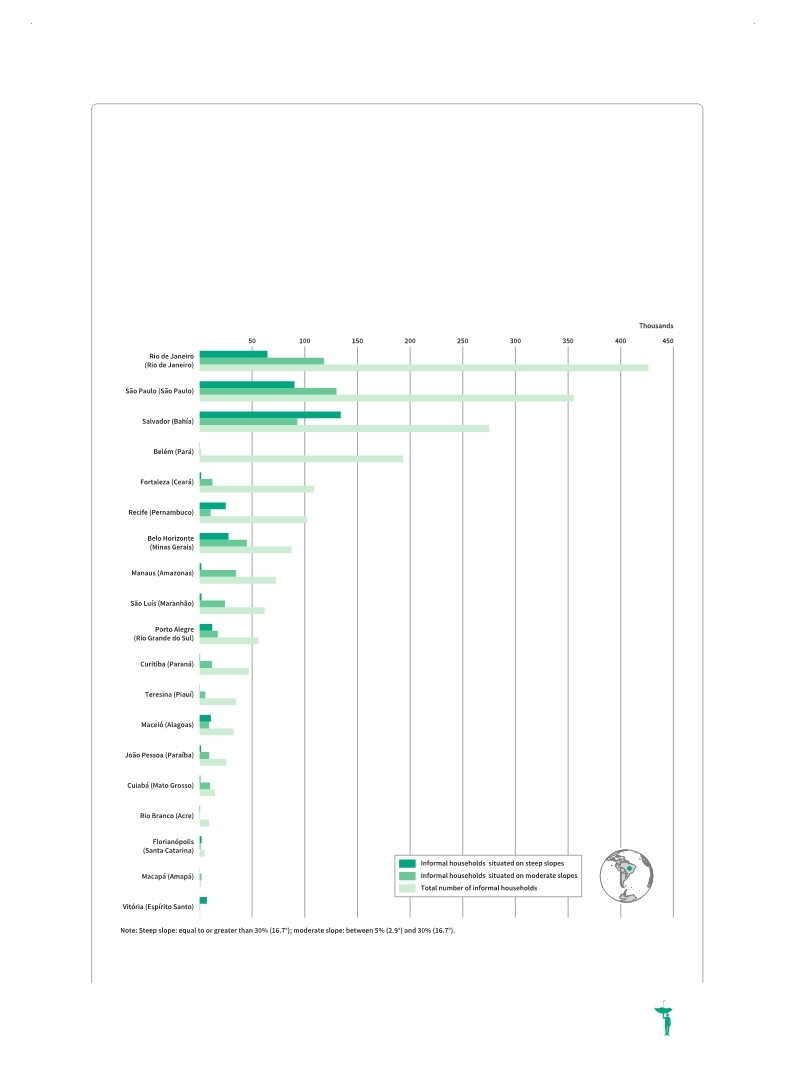 |
Global Assessment Report on Disaster Risk Reduction 2015
Making development sustainable: The future of disaster risk management |
 |
Global Assessment Report on Disaster Risk Reduction 2015
Making development sustainable: The future of disaster risk management |
|
|

223
Box 11.5 Strengthening capacities for disaster risk management in Brazil
Within only 70 years, Brazil went from being around 30 per cent to 84 per cent urban. This rapid urbanization process has been characterized by highly unequal urban development and land use. Real estate speculation has largely excluded low-income households from existing and new residential areas, obliging them to informally occupy areas that were outside of the formal land market. This led to a social construction of disaster risk over time. A number of Brazil’s metropolitan areas, including Salvador, So Paulo and Rio de Janeiro, together contain more than one million informal households. Of those households, almost 60 per cent are located on moderate and steep slopes (Figure 11.7).
Figure 11.7 Informal households situated on moderate and steep slopes in selected Brazilian cities
(Source: UNISDR with 2010 data from IBGE.8)
|
 
Page 1Page 10Page 20Page 30Page 40Page 50Page 60Page 70Page 80Page 90Page 100Page 110Page 120Page 130Page 140Page 150Page 160Page 170Page 180Page 190Page 200Page 210Page 213Page 214Page 215Page 216Page 217Page 218Page 219Page 220Page 221Page 222Page 223Page 224->Page 225Page 226Page 227Page 228Page 229Page 230Page 231Page 232Page 233Page 234Page 235Page 236Page 237Page 240Page 250Page 260Page 270Page 280Page 290Page 300Page 310
|
|
 
|
 
|
